Spiders don’t really need any help in the creepy department, as the ten featured on this list attest. Nor do they need myths or horror stories to make them scarier. But that doesn’t stop people from trying.
Take the popular story children tell each other: A spider drops down from the ceiling at night, one tiny black mass hanging precariously from a nearly-invisible thread. Its target? The gaping mouth of an unsuspecting, snoring child. That’s how one person eats at least 15 spiders a night, the legend goes.
Except no matter how many times we tell each other the tale, it’s still not true, says Richard Bradley, an associate professor emeritus at Ohio State University and president-elect of the American Arachnological Society.
“Some people have been working on this, trying to disprove it by forcing spiders to go into people’s mouths, and they won’t do it,” Bradley says. “If you were in the center of a huge monster several hundred times larger than you, would you want to go into its mouth?”
Bradley, author of Common Spiders of North America, is one of many professional and novice arachnologists in the country studying the planet’s eight-legged critters and working to dispel popular myths. Most lesions, sores and bites, for example, are blamed on spiders but caused by either an insect or even a flesh-eating bacteria, he says.
But no matter how many times researchers explain that spiders don’t seek out small children to carry away to their webs, deep-rooted fears remain.
In honor of a season full of heebie-jeebies and creepy crawlies, the Cool Green Science blog asked Bradley and U.S. arachnologists for the country’s most interesting, notable or just plain creepy spiders.
Below are the top 10. And for those who just can’t get enough furry legs, googly eyes and impressive fangs, we’ve included an extra one at the end — what is considered the Bigfoot of the spider world.
-
Longest Living
Trapdoor Spiders
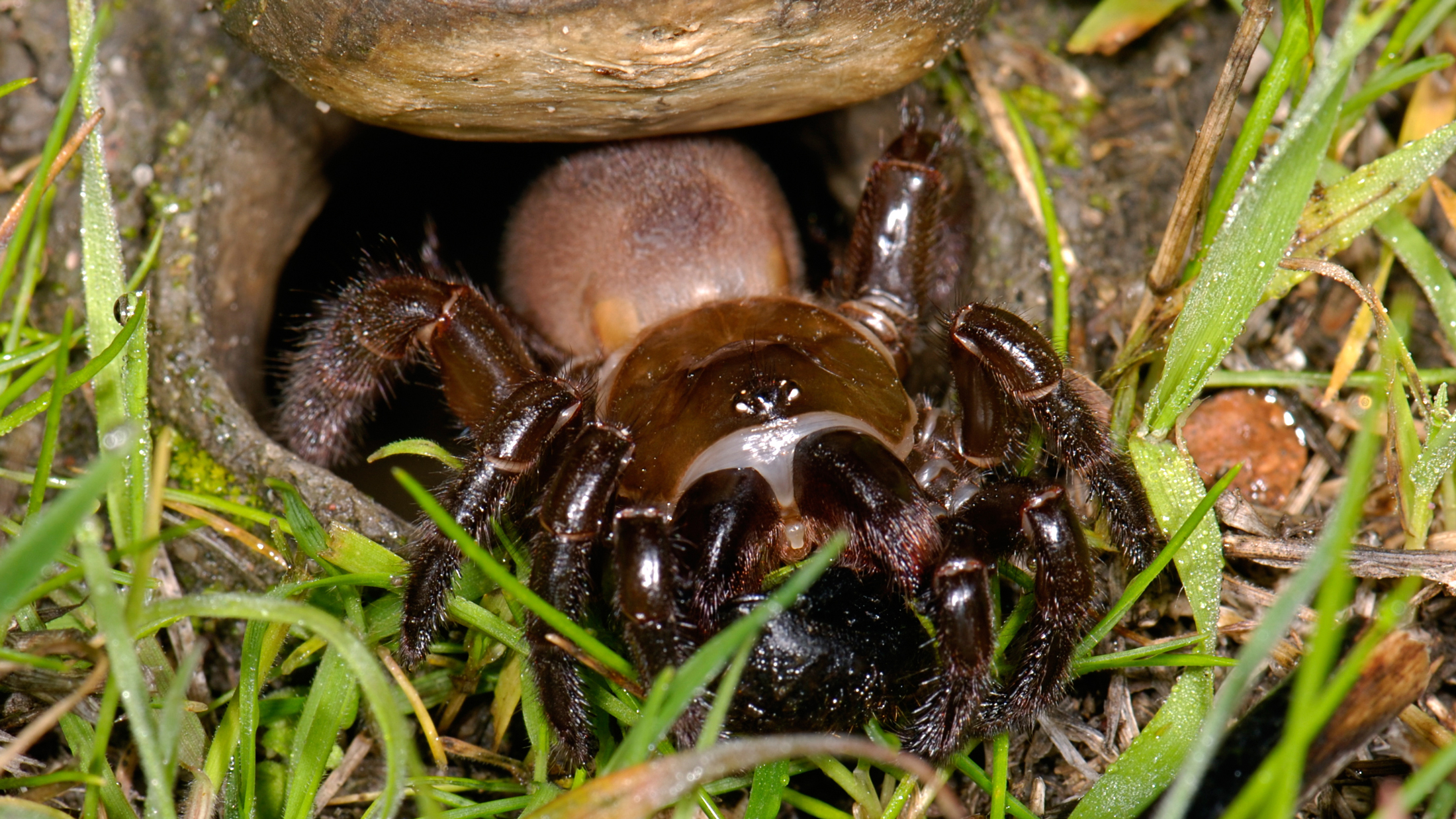
A California trapdoor spider (Bothriocyrtum californicum) strikes at a tenebrionid beetle. Photo © Marshal Hedin/Flickr Imagine building a closet tucked away somewhere safe, and then spending the next 40 years inside. The trapdoor spider does essentially just that, says Marshal Hedin, biology professor at San Diego State University and current president of the American Arachnological Society.
The large, furry females dig a burrow, create a door over the top out of soil, silk and saliva, and never come back out. At night, she props the camouflage door open with the top of her head and waits for vibrations from passing insects. “When something comes by, they grab it with their front legs and go back down into their burrow,” Hedin says. They have been documented in the wild to live up to 35 years old.
-
Best Throwers
Net-Casting Spider, Deinopis
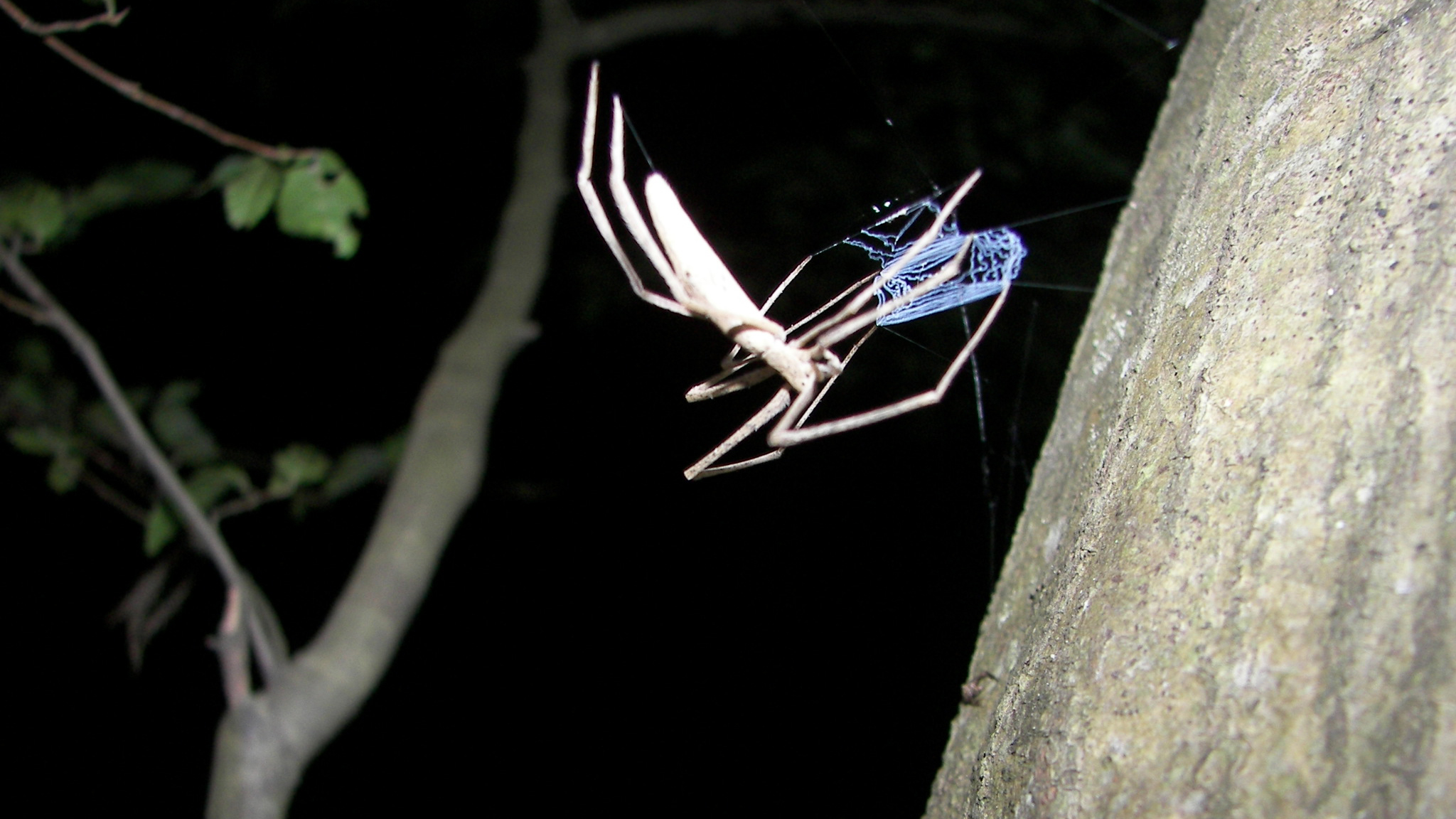
Deinopis spinosa. Photo © John/Flickr They go by many evocative names including net-casting, ogre-faced and gladiator spiders. Up close, the Deinopis looks like a walking stick with legs wearing a pair of motorcycle goggles.
“I think they’re adorable, but that’s just me,” says Natalie Stalick, a Wyoming-based spider aficionado.
Their claim to fame, outside of their larger-than-life pair of eyes, is their ability to “catch” their prey. The spider typically hangs upside down in a plant or tree with its back legs and holds a rectangular net of silk with its front two legs. When an insect such as a grasshopper wanders by, the ogre-faced spider throws its web as a fisherman would cast a net, says Paula Cushing, curator of Invertebrate Zoology at the Denver Museum of Nature & Science.
-
Least Venomous (But Still Somewhat Disturbing)
Feather-legged orb weaver, Uloborus, Family Uloboridae
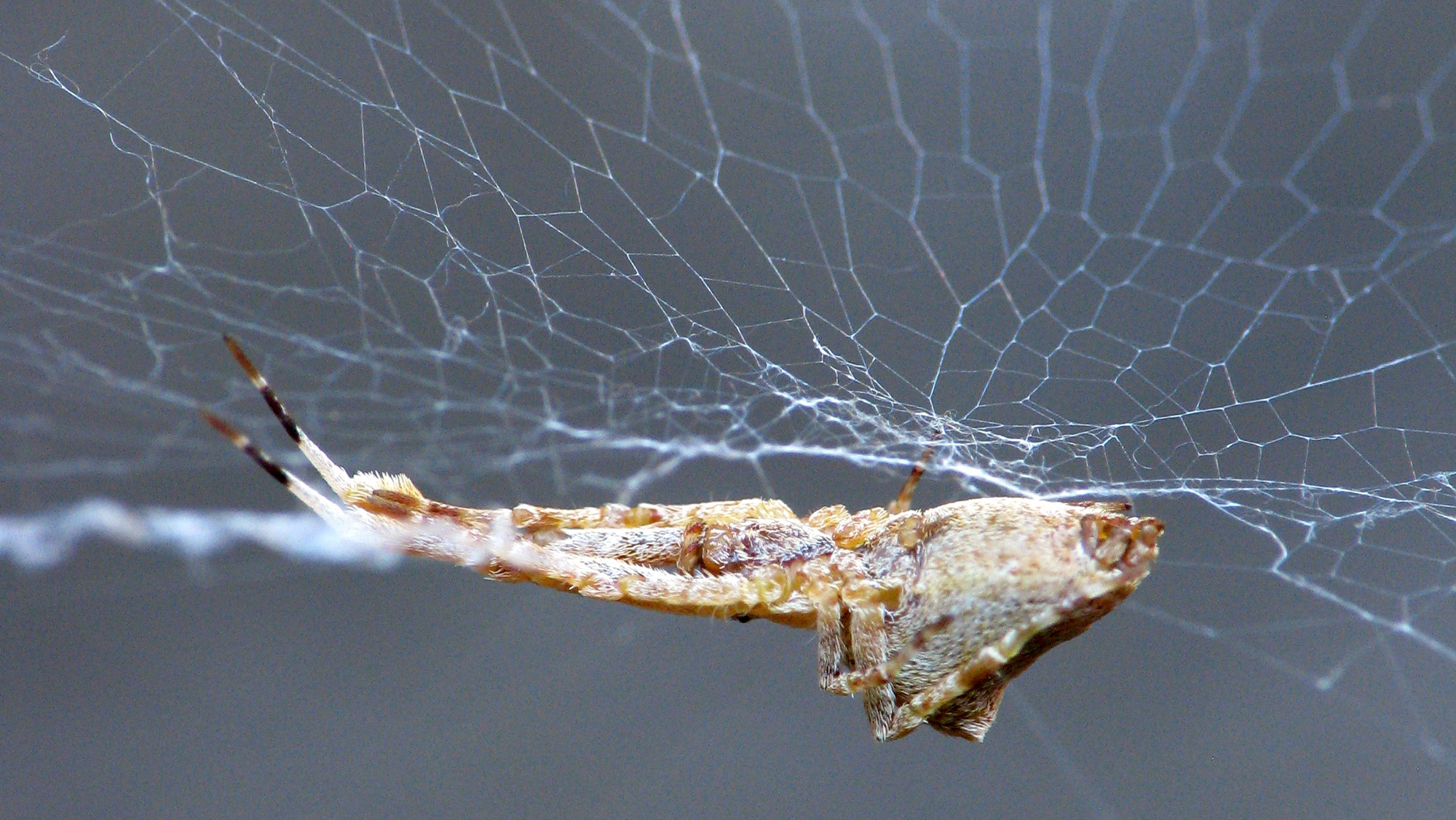
Uloborus spider. Photo © Michael Schmidt/Flickr The dietary habits of most spiders don’t help their creepy reputation. They eat by injecting venom and digestive enzymes into their prey, waiting for the insides to dissolve and sucking it out.
But not this guy. The feather-legged orb weaver is a member of the Uloboridae family, the one North American spider family without any venom at all.
Its webs resemble cotton candy, and entangles prey rather than traps it with a sticky glue, Bradley says. The orb weaver uses the silk and its powerful legs to squeeze dinner to death, then sticks its hollow fangs inside, spits digestive enzymes with its mouth and sucks the emulsified insides back out.
-
Most Venomous
Black widow Latrodectus sp, Family Theridiidae
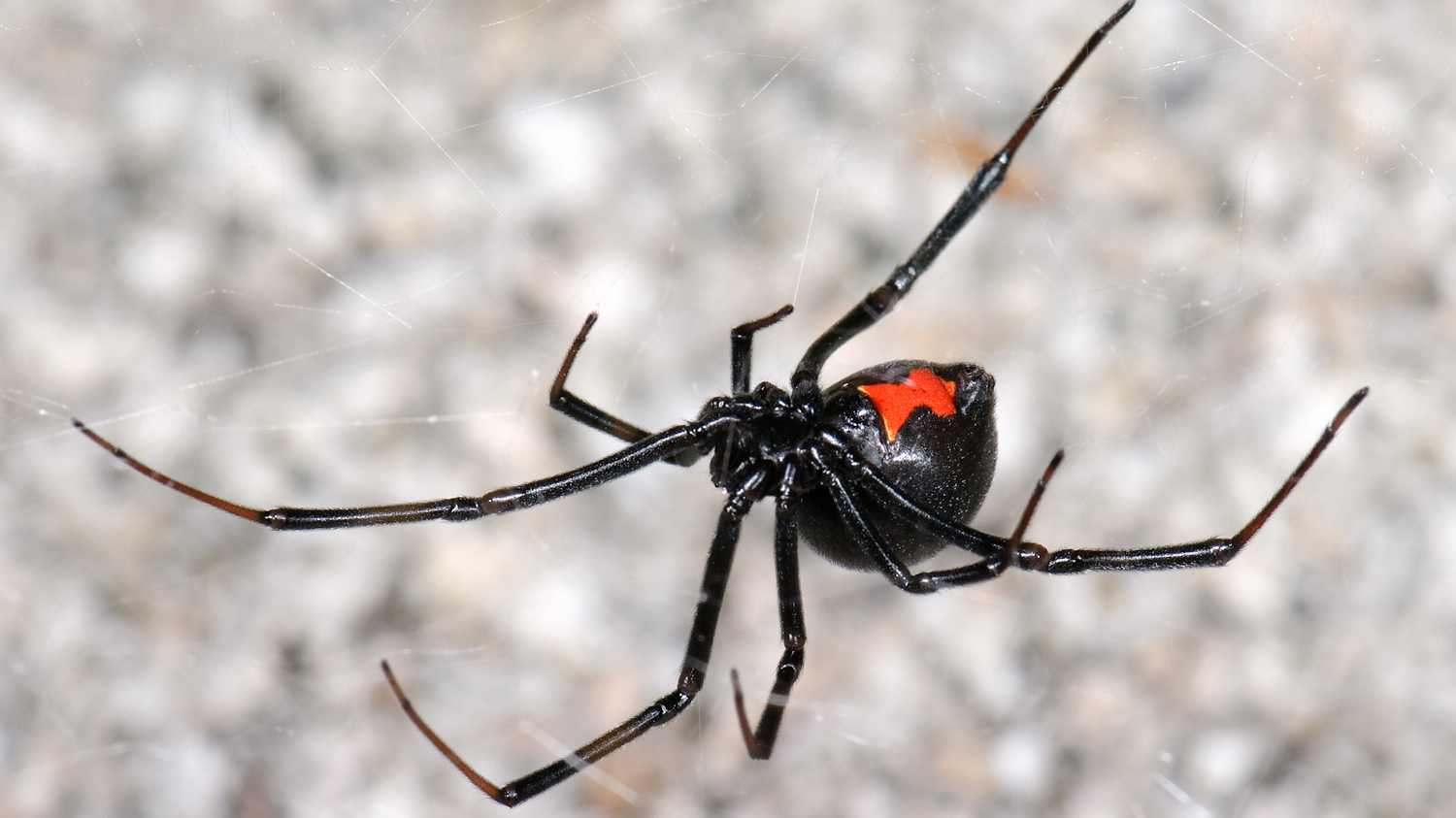
Black widow (Latrodectus hesperus). Photo © Marshal Hedin/Flickr Depending on what criteria is used, either the black widow or the brown recluse is the most venomous spider in North America. Both spiders are the only ones with bites venomous enough to require medical attention. Both can kill a human if a bite is left untreated.
But the black widow, argues Bradley, more frequently causes serious reactions including severe cramping, nausea and chest pains. They are widely distributed across most of the southern part of the U.S, and in some areas, such as around Los Angeles, they join brown widows as one of the most common spiders.
Instead of fear, that should instill hope, he argues. “There are probably millions of them in the L.A. Basin, and there are 15 million people there” he said. “The fact that there are millions of spiders and millions of people and very few people get bitten is remarkable.”
-
Most Maternal
Wolf Spiders, Lycosidae
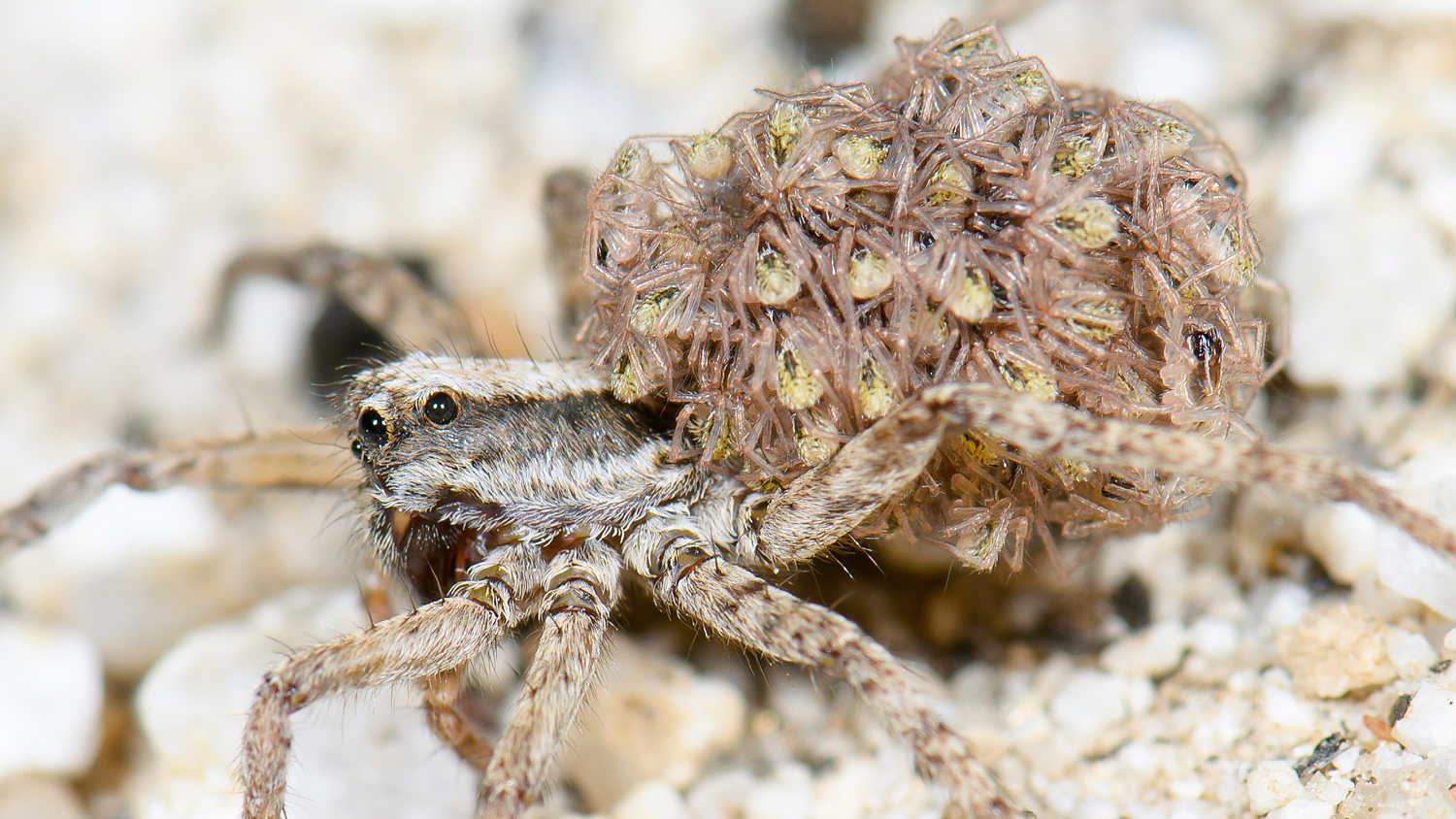
Female Lycosid spider with spiderlings. Photo © Marshal Hedin/Flickr While the most infamous of spiders might be known for killing its mate shortly after copulation, one family of spiders is known for its loving care.
The wolf spider, a large, nomadic arachnid that hunts its prey rather than snaring it with a web, carries around its eggsac on its spinnerets. “When the babies hatch, the mom chews a hole through the silk, the babies crawl out and hitch a ride on her back until they are old enough to fend for themselves,” according to Cushing.
A female might carry hundreds of babies on her back at any given time, which is why some people believe the spiders shatter when hit because the babies will scatter in every direction.
-
Most Aggressive
Velveteen tarantula, Calisoga longitarsi
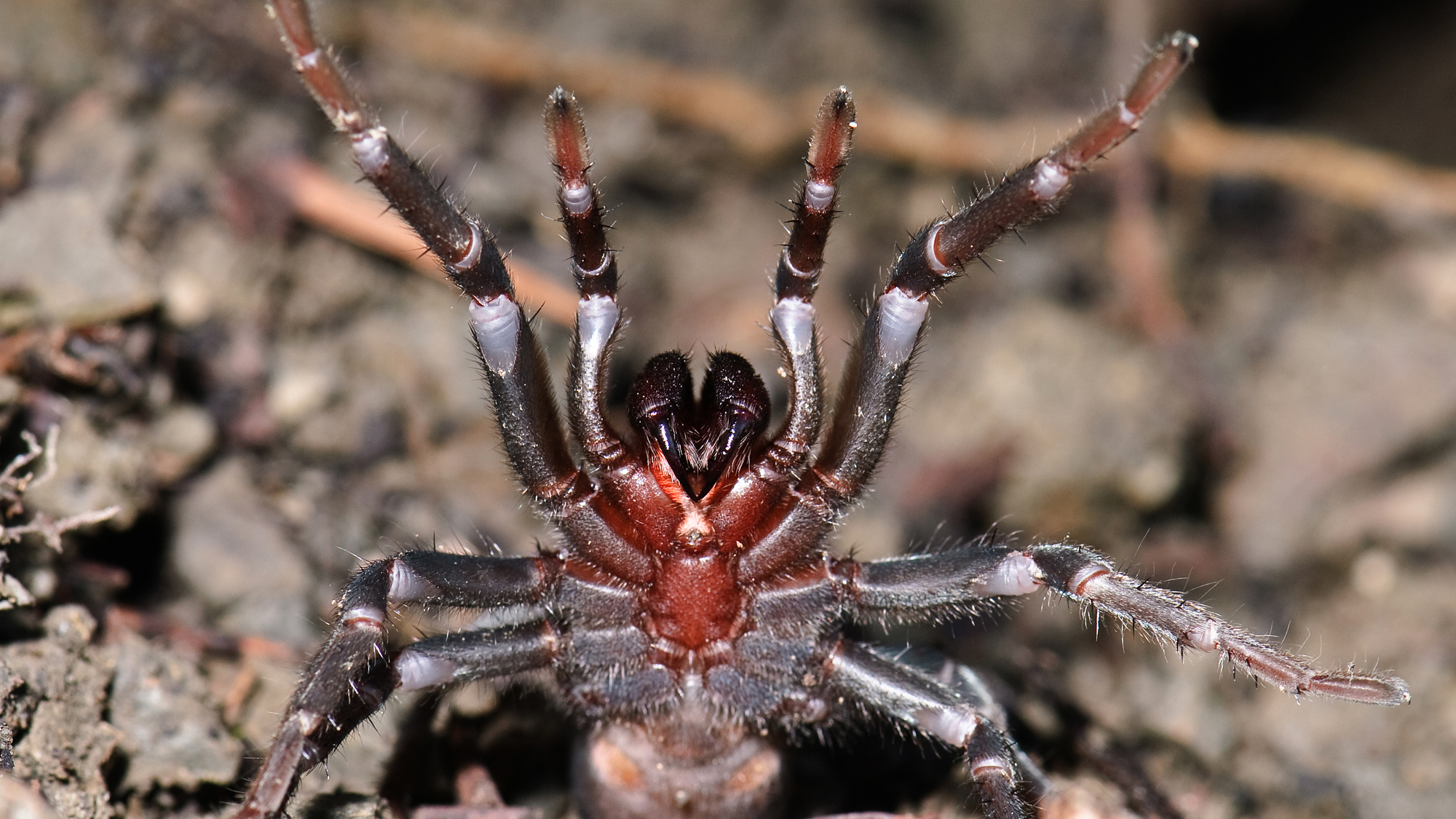
Calisoga longitarsis, threat position. Photo © Marshal Hedin/Flickr The common name comes from the spider’s iridescent colors, but the niceties end there. If any kind of arachnid would be considered aggressive, it’s the Calisoga, Hedin says.
The large, furry creature lives underground and does not take threats lightly. It will stand on its hind legs and flare its long fangs before chomping down on food or enemy.
“If that spider bit you, it would hurt just from a structural standpoint,” says Hedin. “It’s not medically dangerous, but I could feel it for a week. The pain lingers.” The California spider won’t run you down, but if you mess with it, be prepared.
-
Most Prehistoric
Lampshade spider, Hypochilus sp
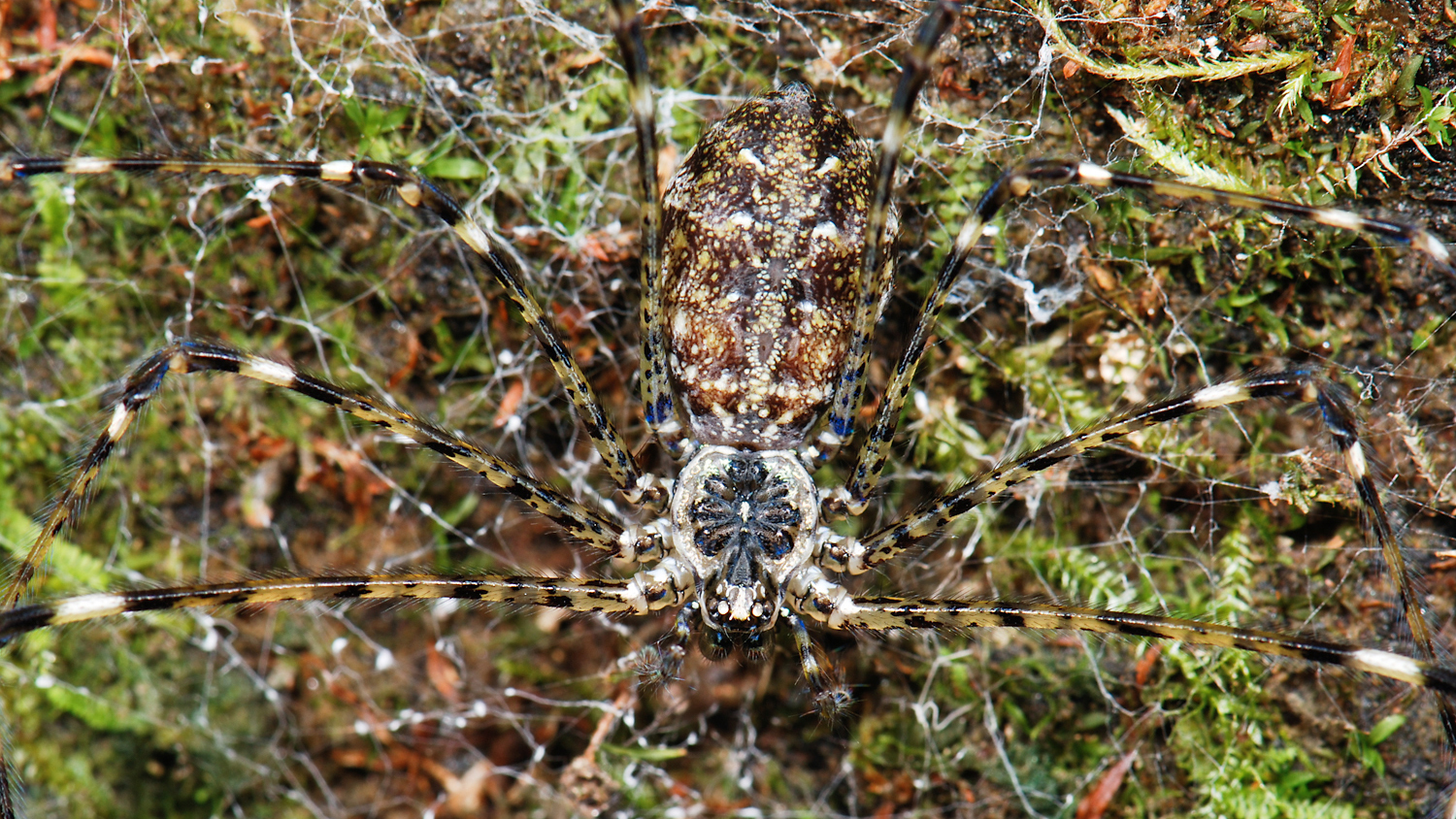
Female lampshade spider (Hypochilus pococki), in web on rockface, western North Carolina. Photo © Marshal Hedin/Flickr This gray and brown spider is often referred to as a living fossil because it has all of the primitive characteristics of the earliest true spiders, Hedin says. “They occupy an interesting place on the spider tree of life,” he says.
They live isolated in small, rocky outcrops in the Appalachian and Rocky mountains and some ranges in California, and have evolved slower than most of their counterparts. “They have features you might expect to see in an ancestor that has gone extinct,” he says, adding that most of the differences are obscure and specialized.
The Hypochilus is also called a “lampshade spider” because of the beautiful webs they form off of rocks that resemble their namesake.
-
Biggest
Desert tarantula, Aphonopelma chalcodes
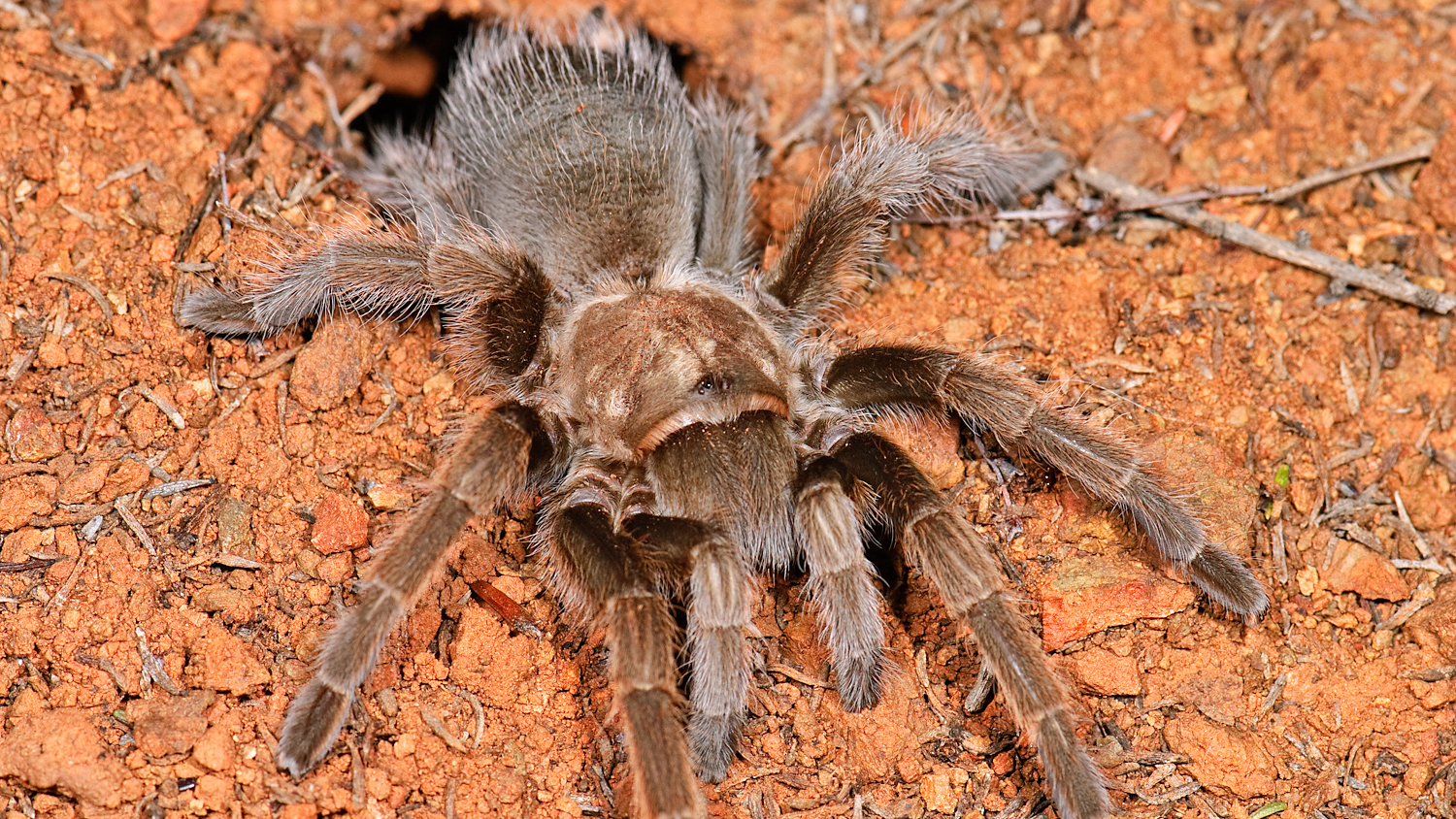
Female Aphonopelma spider. Photo © Marshal Hedin/Flickr In the genus Aphonopelma, one full of large spiders, the chalcodes stands out. Its body is 2.5 inches long and the leg span is at least twice that, says Bradley. That makes the spider safely at least 5 inches across.
“The average person would look at it and say it is 20 inches long,” he says. But even Bradley admits it is one big spider.
Despite its size, its bite packs little punch. The spider is not terribly venomous to humans, and since the females live in burrows in the desert and are nocturnal, they are rarely seen.
-
Smartest
Bold Jumper, Phidippus audax
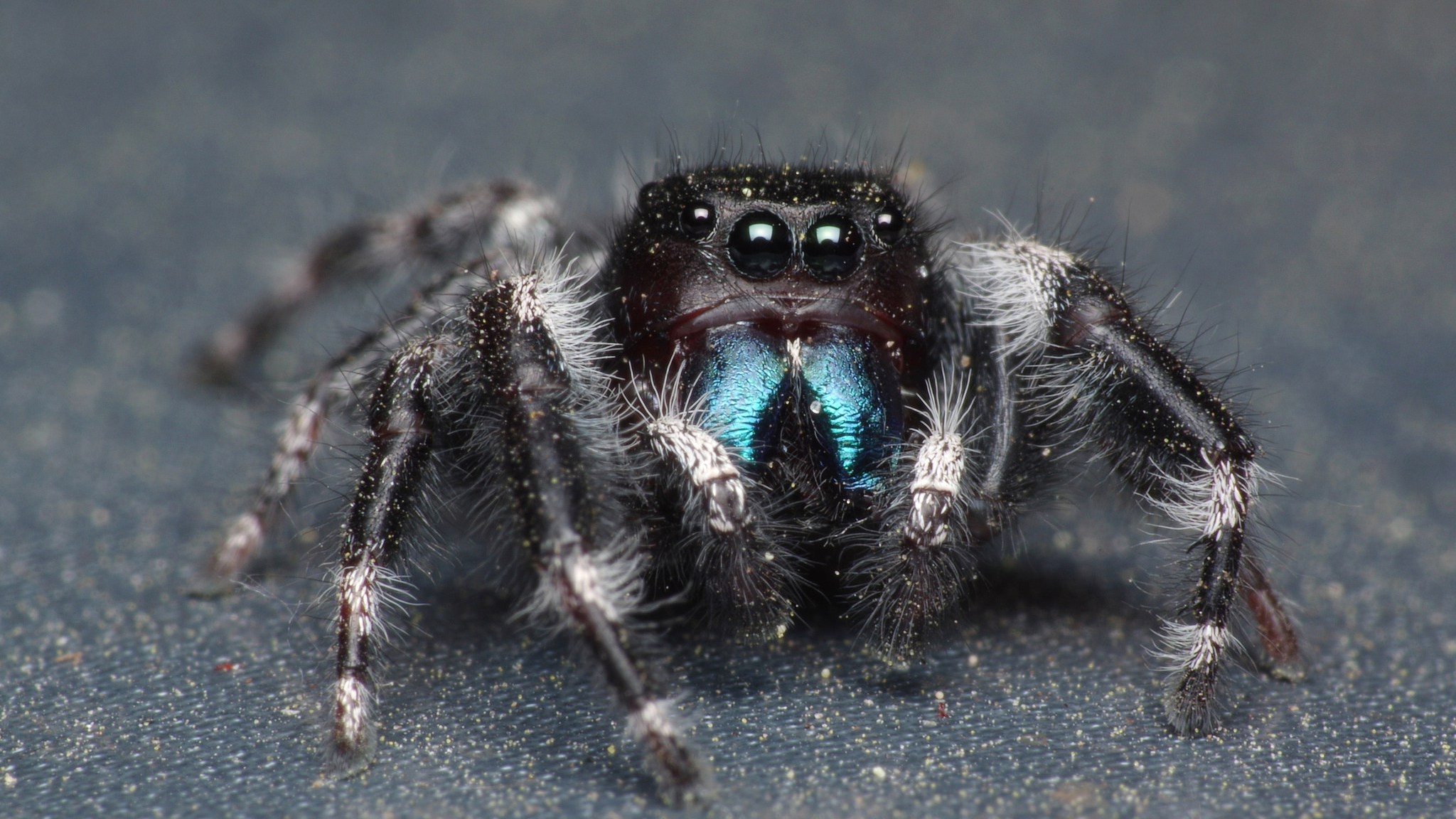
A gorgeous Phidippus jumping spider (most likely Phidippus audax). Photo © Pascal Gaudette/doundounba on Flickr Is a spider capable of solving a puzzle? Jumping spiders are, Bradley says. While the brainiest of all jumping spiders are found in Africa and Australia, North America has a few over-achievers of its own.
The bold jumper, for example, is particularly interesting with its black, white and sometimes orange spots and iridescent green or blue-green fangs. Jumping spiders use their vision to hunt prey instead of sensing vibrations like most other spiders. They can also develop hidden routes to stalk prey, making decisions based on intellect rather than instinct, Hedin says.
-
Prettiest
American Flag Jumping Spider, Habronattus americanus
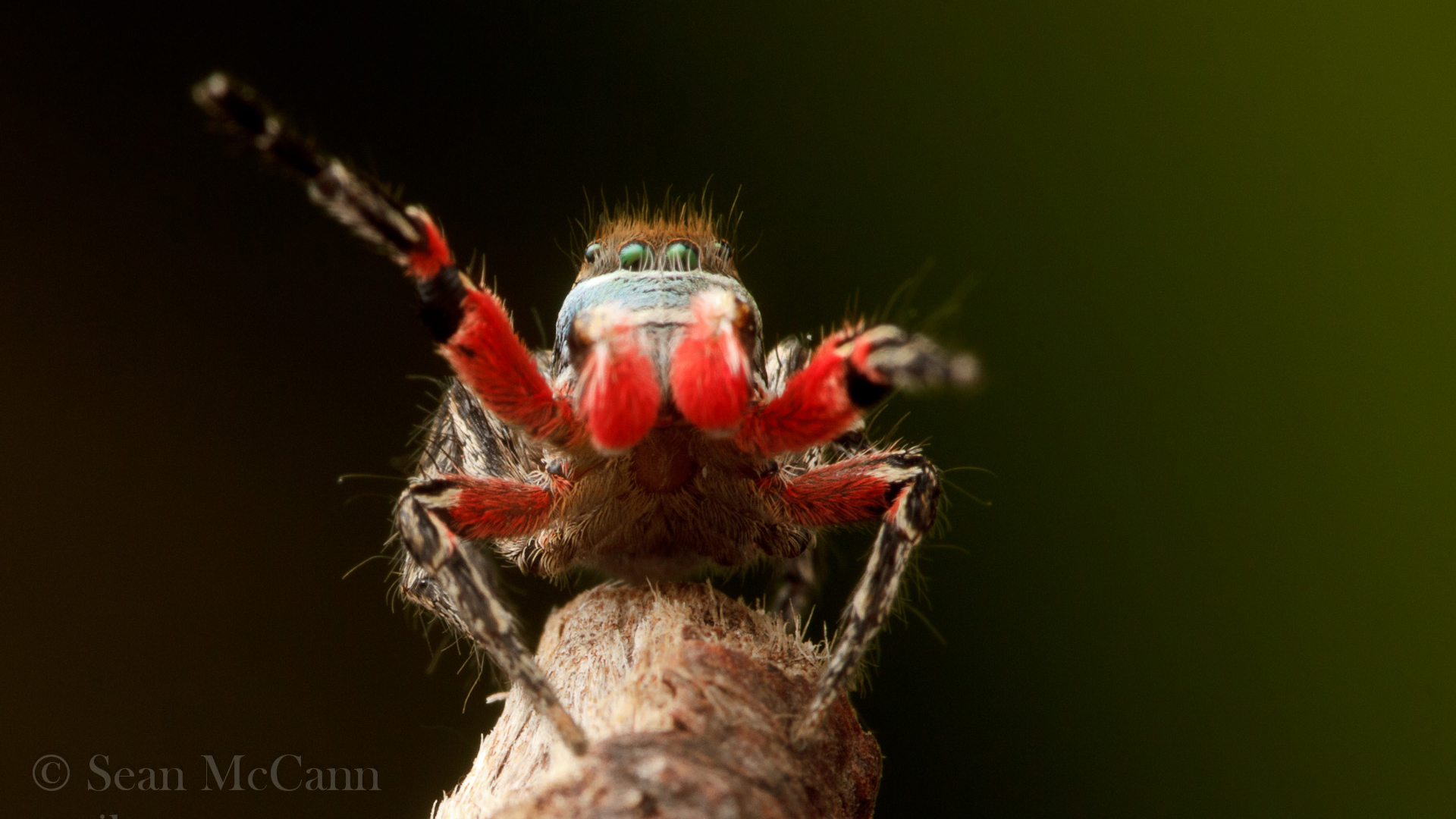
Habronattus americanus. Photo posted with permission © Sean McCann/Flickr and at http://ibycter.com/ Beauty is obviously in the eye of the beholder, and the “prettiest” spider is a subjective category, but Hedin says the American flag spider is certainly the most patriotic.
So patriotic, in fact, it was once featured on a postage stamp. The males sing and dance for the females by flicking their front legs and producing seismic sounds with their abdomens, Hedin says. Their scales are, you can probably guess, colored red, white and blue.
And a bonus Halloween treat, for all the arachnophiles:
-
Rarest
Cave robber, Trogloraptor, Family Trogloraptoridae
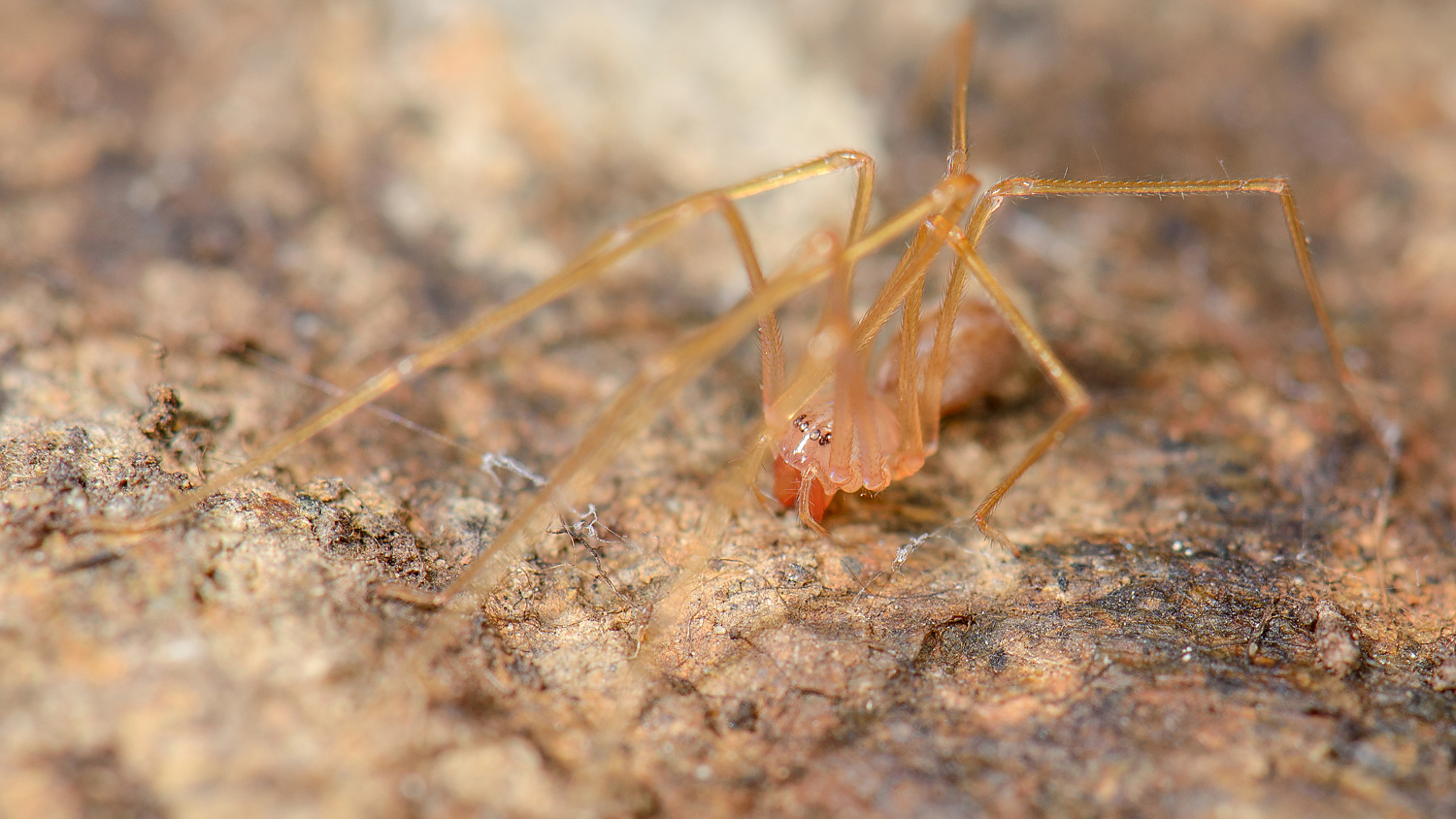
Adult female Trogloraptor sp. Photo © Marshal Hedin/Flickr Until 2012, no one knew the Trogloraptor — with its skinny, orange legs — existed. But when a team of scientists found it in old-growth forests in Oregon and California, they realized they had not only found a new genus, but a new family of spiders.
Its finding was so notable, the discovery was featured by publications such as Wired and PBS. It was the first new family of spiders to be added to North America since 1890.
“It’s very unusual for anywhere, in all of life, to walk out in the woods, pick up something, look at it, and say, ‘Bam, this is a new family of life on Earth,’” Jonathan Coddington, associate director for science at the Smithsonian Institution told PBS in 2012. “That isn’t just among spiders. It almost never happens.”
One species lives in caves and the other in redwood forests, a relic of what likely occupied redwood forests that covered much of the western U.S. millennia ago.
“There are legends of big spiders in caves,” California Academy of Science’s Charles Griswold told PBS in 2012. “It’s the stuff of legends, which is why we compare it to Sasquatch. But in this case, the legend has come true.”
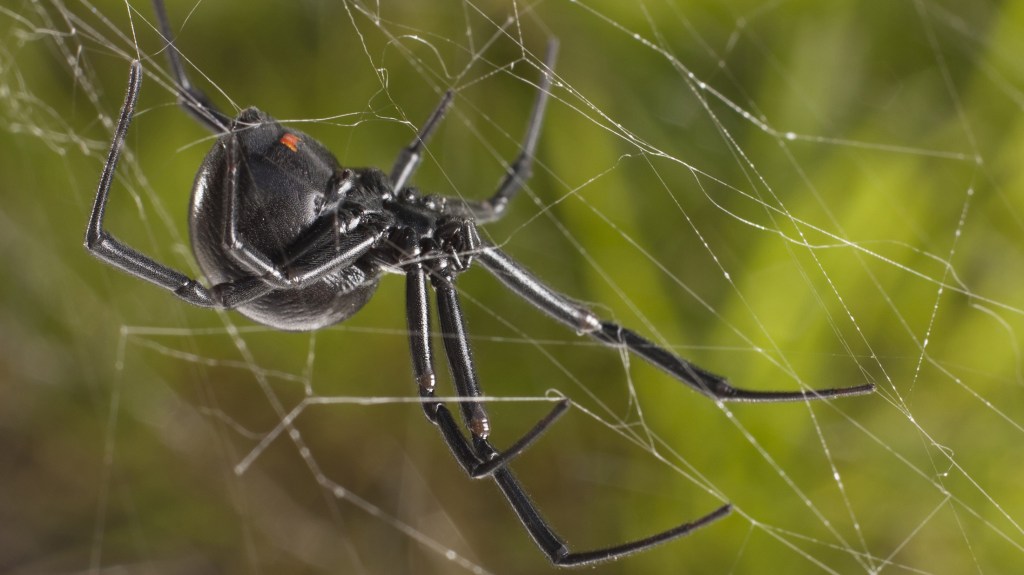



Those are some crazy spiders.
The myths continue in your article…first off the title…continuing to use words like “creepy” just enhances and continues the belief that spiders are an ‘evil’ creature. Another “fact” that continues in your article is the black widow devouring its mate after conjugal visits. On occasions, many spiders will eat their own kind along with a wide assortment of other arthropods, it is actually very unusual for the black widow to eat her mate after mating. ( I am basing this on the Western Black widow of the United States, Latrodectus hesperus). On Nine different occasions, I have placed male black widows into a one-quart container with a female black widow. On each occasion, the male copulated with the female always approaching her, and then returned to the furthest corner of the webbing uninjured. It was interesting to note that the male commonly died of “natural causes or old age” three to four weeks after mating. This may not be considered a very extensive or scientific study but it surely has led me to believe that it is not common for females to devour males after mating. I have also brought this up to several entomologists who concur that this mate-eating myth is so ingrained into our scientific knowledge that we still perpetuate and disseminate it regularly. Many spiders do “sometimes” eat their mates and I know there is a species ( name long forgotten now) that will even impale himself on the female’s fangs during copulation.
I have a spider in a pine tree that I never saw before in my life! It has a big oval looking furry body with six long legs! The legs and body are all fur. The size is 12 to 16 in. Around. The legs are approx. 8 to 12 in. Long. It has not moved at all in the tree and wondered if it is in hibernation? Could there be more around like this? I sit hear every morning, and I would have noticed this immediately but this is a first for me. Please respond. Thank you.
Hi Pat, That doesn’t sound like anything I know of in North America, but if you can get a picture, you should submit it to your state wildlife agency to see if they can identify it. If it were smaller, I’d say it might be a wolf spider: https://en.wikipedia.org/wiki/Wolf_spider Let us know what you find out. Thank you!
hiiii friend , my name is navneet yadav . i found beautifull spider . can i see you?
Hi Navneet, Thank you! I suggest submitting an image of the spider to iNaturalist or a similar citizen science project: https://blog.nature.org/2015/01/27/citizen-science-inaturalist-naturalhistory-nature-photography-app/
Even though your introduction attempts to down play spider myths, I really wish you and others would not enhance negative stereo types with words Like “Creepiest” , creepy spiders, etc…..This kind of language whether used about small creatures or words like “vicious” used to describe large carnivores only enhances the belief these creatures are at odds with humankind and should be killed . Snakes and spiders particularly seem to always get the worst of it therefor “justifying” a persons right to kill it.
NEAT
Madam, Good evening, good article, very informative. yesterday I got black widow. I also have posted it on G+.
Miss Peterson, I am interested in all of nature on this beautiful planet. But my wife and I live on the central coast of California. I’m talking about the San Luis Obispo, County. I was recently bit by a spider, it caused an infection that wouldn’t heal for three weeks until I decided to go to the family Doctor. She prescribed me antibiotics and that did the trick. Are there any books on Arachnids you know of specifically in this part of the country. Thank you for this great article on that newly discovered spider family. John Cardinali
I think you should drop the “Most Aggressive” category. Spiders are defensive, sure, but they aren’t aggressive. You even say as much with the final line of the category: “The California spider won’t run you down, but if you mess with it, be prepared.”
Except for the title with the word “Creepy”….this was a fantastic synopsis on North american spiders. The truth is far more fascinating and interesting than the myths, exaggeration, and folk lore .
You have not mentioned the Hobo Spider. They are a large spider, extremely fast on a wood floor (and else where), and their bite is very dangerous. They are found in Washington, Oregon, and Montana that I know of, but as their name suggests are probably more wide spread today. Eastern Idaho gave much coverage of this spider in the late 1980 thru 1999. Have moved since then so don’t know if they still do.
Loved the top ten spider report. Well researched and well written.
What a delightful story. My whole family (going back generations and forward two beyond me) is fascinated by spiders, and would often call each other to come see a particularly interesting specimen. We still do that. Black widows were carefully captured in jars to admire and released respectfully in a place safe for it and humans. My youngest daughter as a young teen had a wolf spider living in a ceiling crevice above her bed and reported on its activities. Thrilling the day the babies emerged. Her fascination with creatures most people seem to find icky has not abated, and she may well end up working in the field . We all observe and venerate spiders who share our space. You can bet I’m going to share this story! But have to say that of the spiders above, the one that appeals to me the most is the jumping spider. Must be the eyes.
Hello, I live in Troy,Ohio and I found a unusual spider in my friends truck bed,and I have never seen one like this around here. It had a golden yellow color to it,with small, brown designs on its back. We turned it over and they re was a small design on its stomach that looks like an hour glass. Could this spider be related to the black widow spider? I cant find any info about this spider! I do have a pic of it on my fb page,which shows the back and belly of the spider. Any info u can give me will be greatly appreciated! Thank You! Sincerely, Darlene Gibbs